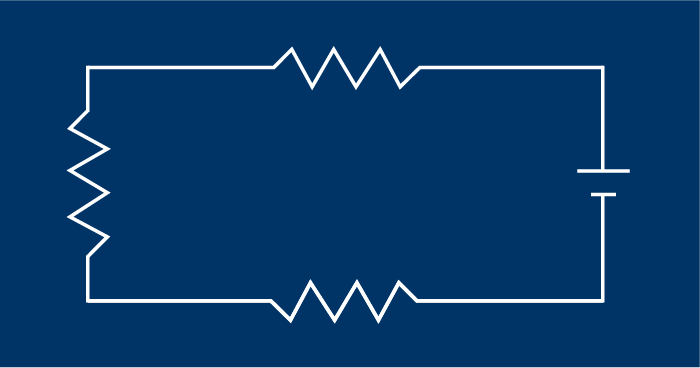Selecting Between a Circuit Breaker and a Fuse
Posted on 2/17/20 10:30 AM

Circuit protection: an important element in electronic or electrical products. Usually in the form of a circuit breaker or a fuse, there are similarities and differences to note in deciding which one to use.
Circuit Breakers
A circuit breaker is an automatic switch that prohibits the flow of electric current when it is rapidly overloaded or unusually stressed.
Similar to a fuse, a circuit breaker can open the circuit pathway in the event of an overload or short circuit. Unlike a fuse, however, a circuit breaker is reusable and is available in a manual or automatic reset. A manual reset requires the user to press a button or move a lever to reset the circuit pathway. An automatic reset will return to normal functioning once normal conditions resume.
When the current is larger than the circuit breaker is designed to handle, the switch contacts open, breaking the current. This occurrence is often referred to as being “tripped.” When the issue is resolved (whatever “tripped” the circuit is repaired), the circuit breaker can be reset. The contacts will remain closed unless another overcurrent fault condition occurs in the protected circuit, causing it to trip again.
Aspects of a Circuit Breaker
Circuit breakers only protect against low-level faults and are not meant to clear faults with high-voltage levels. A circuit breaker is not a surge suppressor for catastrophic events, such as lightning strikes or high-voltage line shorts.
While it may take longer for a circuit breaker to trip when exposed to moderate overloads, at high overloads it tends to trip more quickly. When tripped, it provides a clear indication that it has tripped.
Because a circuit breaker’s design allows for repeated use, it eliminates the possibility of an incorrect fuse replacement. With a fuse there is a chance that an incorrectly rated one may be used, which could result in injury or equipment damage.
A circuit breaker is larger in size than a fuse, so it takes up more panel and internal space. If the circuit breaker does become disabled, it may require a technician to replace it.
A circuit breaker is in larger increments than a fuse. For example, a fuse can be in milliamps of .032A, .080A, or 1.25A, while a circuit breaker is in even or half increments such as 4A, 10A, or 15A.
Initially, a circuit breaker may be more costly than a fuse. The savings can come with the reduction in replacing components.
Factors that may affect a circuit breaker’s life span include arc strength, setting time, and frequency of resetting. Ambient temperatures do not affect some types of circuit breakers as much as a supplementary fuse may be affected.
Fuses
A fuse is a replaceable circuit protection device that provides protection to both the equipment and the equipment operator in the event of a circuit overload.
A typical fuse is constructed using a thin metal strip or filament sheathed in a glass or ceramic enclosure. The metal strip is attached on each end to a separate terminal on the outside of the fuse. These external terminals mate with matching terminals attached to the protected circuit.
Any current, or flow of electricity, that moves through the circuit flows through the metal inside the fuse. The metal strip will melt when the current exceeds the amount that the fuse is designed to withstand, opening the circuit path, and disconnecting the equipment from the power source. When a traditional fuse disconnects (or “blows”) it must be removed and replaced with a new fuse.
Aspects of a Fuse
There are two standard sizes of fuses used throughout the world: 5 x 20mm is used worldwide and ¼ x 1¼-inch is typically used only in North America.
A fuse tends to be more economical in terms of component costs than a circuit breaker and may be the more recognizable form of protection with equipment designers and users.
If a product is being designed for multiple markets and modifications are needed, a fuse can be easier to change than a circuit breaker. There may be redesign requirements when shifting from a circuit breaker compatible with North American power requirements to one compatible with international power requirements.
If the equipment will be marketed to both North America and other global markets, one strategy for designing for multiple markets is to include a fuse holder that is compatible with both North American and international fuses and fuse carriers. For example, a North American product operating at 115VAC might be protected with a 6A fuse. The same product could be shipped to an international market where it might run on 230VAC. To accommodate the 230VAC power supply, the 6A fuse could be exchanged for a 3A fuse. This change can be made by using a fuse holder that is compatible with both sizes of fuses.
Another suggested strategy is to use a 5 x 20mm fuse. When marketing globally, this common fuse size can help to keep components costs and overhead down.
Additional Resources
The type of circuit protection that is best in the design of the electrical product is a critical element to determine. For more information on circuit breakers and fuses, see Circuit Breakers and Fuses and Fuse Holders on Interpower’s website. See also the Interpower Featured Product pages on Circuit Breakers and Fuses and Fuse Holders.
Interpower offers free technical support. For further assistance, please see Interpower’s contact information below.
Topics: fuses, product design, designing for export, circuit breaker





